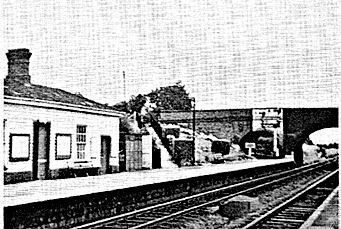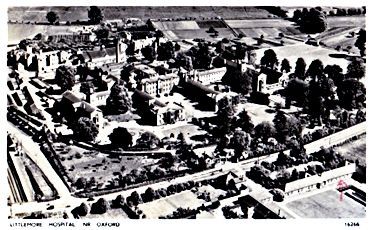Steps lead from the station platform coming out on the road just 60 yards from Holloway’s shop/inn.
William John Holloway: Baker, Publican and Labourer
Chris Brickwood, Steventon History Society, April 2025
In an 1839 valuation survey the building on Steventon High Street now known as The Cherry Tree pub was then described as a house and premises owned by one Edward Johnson and occupied by William Holloway - a ‘baker, shopkeeper and beer retailer’. The Great Western Railway arrived at Steventon in 1840 and the station opened only a couple of hundred yards away from Holloway’s shop: by the 1841 Census William is now described as Publican at the same premises
Born c. 1796 in North Leigh in Oxfordshire, he has nine children all born in Steventon: Benjamin 20, William 16, Martha 15, Richard 13, James 12, Elizabeth 10, Ann 9, George 5, and Mary 2 (ages are in some cases best guesses based on poor reproduction of the census). Sadly, his wife – Martha, nee Carter, married in Steventon in 1817 - had died in 1840 a few months after giving birth to Mary. While the census is poorly reproduced it looks as though William may have had a 15-year-old domestic servant Emma Slade to help, and possibly some other staff including a clerk and a male servant.
The 1842 Pigot’s Directory shows that William Holloway is running what was then listed as the Railway inn. Snare’s Berkshire Almanac 1844 shows that Holloway is still running the Railway, while by the 1847 Kelly’s Post Office Directory the Railway is now called the Railway House. Holloway continues to run it until at least 1848, but the 1851 Census shows that he has left.
By 1851 William has fallen on hard times and is now an agricultural labourer, recorded as on Stitchings Farm, accompanied by only two of his children. At least two sons have followed in his earlier footsteps and become bakers: Benjamin is at the Kings Arms in Mapledurham, William junior is lodging at the Kings Arms in Steventon. James is now an inmate at Oxford County Pauper Lunatic Asylum in Littlemore – which was a new facility opened in August 1846, the first provision for pauper lunatics in Oxfordshire, with much of Berkshire – including Abingdon - joining in August 1847.
Elizabeth and George are still living with William senior as a waistcoat maker (one of at least ten so employed, alongside two frock makers) and at school respectively. Ann is a servant living in the Fox Inn. Martha has married a Caleb Belcher and is living in Reading, and young Mary is living with them. There’s no sign of Richard.
Elizabeth seems to have moved away at some point after this and married a Charles Day: in 1861 they were living in St Marylebone, Middlesex, with a three-year-old daughter Frances. Ann has moved to Devon where she has become a cook.
In 1861 William and George were living on Pugsden Lane, and William remains a labourer for the rest of his life, dying in Steventon in Q1 of 1876, with George living with him - as another labourer - until the end. After William's death, George eventually becomes a jobbing gardener – after marrying Sarah, a seamstress who made shirts, probably in Q2 of 1876, having two daughters Ellen in June 1877 and Alice in 1878 - and remained in the area until his death in 1906.

